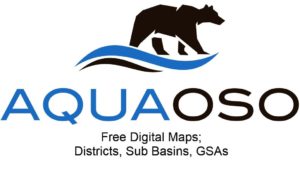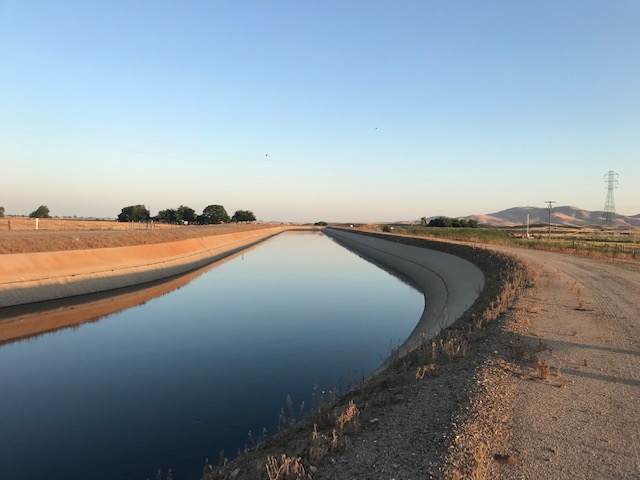 The Kaweah Delta Water Conservation District held its Tuesday March 2, 2021 board of directors meeting on GoToMeetings – GoToMeetings* is one of the more problematic forces of evil I have to deal with. I ended up joining by phone. I was barely able to get my anti-GoToMeeting public comment in. Chairman Don Mills wasn’t able to attend so Director Chris Tantau was running things and those things got started at the scheduled 9:00am start time.
The Kaweah Delta Water Conservation District held its Tuesday March 2, 2021 board of directors meeting on GoToMeetings – GoToMeetings* is one of the more problematic forces of evil I have to deal with. I ended up joining by phone. I was barely able to get my anti-GoToMeeting public comment in. Chairman Don Mills wasn’t able to attend so Director Chris Tantau was running things and those things got started at the scheduled 9:00am start time.
Audit
The consent calendar was approved without comment, as it should be and the audit report was next. A spokes-lady-CPA from M. Green & Co. gave the report. KDWCD received the little known GASB (Government Accounting Standards Board) AOK/Atta Boy/All’s Well rating. Verbal audit reports are not required by law but can you imagine working on something as detailed and complicated as an audit and not be allowed to talk about it? General Manager Mark Larsen said KDWCD is under some financial twist in the law. As a conservation district it isn’t allowed to borrow money and has to maintain a much bigger reserve than most similar agencies. The sale of the power plant at Terminus Dam was also the sale of one of Kaweah Delta’s alternate funding sources. The report took about 20-minutes and concluded with the CPA praising the Kaweah Delta staff for its help. The district participates in CalPERS for its retirement and its savings are insured at 110 percent of the full amount as a requirement, if I understood correctly. The board approved the audit and Larsen said M. Green was good to work with.
was next. A spokes-lady-CPA from M. Green & Co. gave the report. KDWCD received the little known GASB (Government Accounting Standards Board) AOK/Atta Boy/All’s Well rating. Verbal audit reports are not required by law but can you imagine working on something as detailed and complicated as an audit and not be allowed to talk about it? General Manager Mark Larsen said KDWCD is under some financial twist in the law. As a conservation district it isn’t allowed to borrow money and has to maintain a much bigger reserve than most similar agencies. The sale of the power plant at Terminus Dam was also the sale of one of Kaweah Delta’s alternate funding sources. The report took about 20-minutes and concluded with the CPA praising the Kaweah Delta staff for its help. The district participates in CalPERS for its retirement and its savings are insured at 110 percent of the full amount as a requirement, if I understood correctly. The board approved the audit and Larsen said M. Green was good to work with.
I believe it was attorney Aubrey Mauritson who said she’s looking into provisions in the law that may allow the district to borrow. Engineer Dennis Keller said since KDWCD is a multi-county district there have been sweeps where the property tax owed to the district was diverted to the schools. There are only two districts under the same act that has this peculiar provisions. Staff will investigate how the district can be freed from the borrowing limitations resulting from the 1928 act establishing the Water Conservation District.
Water Supply
Next Water Master Vick Hernandez gave the water report saying things are shaping up as a 40 percent snow supply this year. He expects the 185,000 a/f Lake Kaweah to not fill. However, there are more storms on the near horizon and like Dr. Doolittle’s Pushmipullyu – farmers are able to be pessimistic and optimistic and water supplies at the same time.
Keller gave the Central Valley Project report saying the Friant Division is at a 20 percent allocation and the westside south of Delta ag has a five percent allocation. The State Water Project is at 10 percent. Shasta should get enough water to the Exchange Contractors for them to receive 75 percent of their allocation and that is enough water to keep the US Bureau of Reclamation from sending San Joaquin River water to them that would have gone to Friant. Friant
Friant
Larsen said the big push at Friant Water Authority is to get everyone at the table agreeing on the need to finance the Friant Kern Canal repair project. FWA needs a $50 million cash flow available. There are some entities, most from districts upstream from the problem that don’t believe they can push these costs onto its ratepayers. There are districts that don’t have the money and may have to take out a loan. Tantau, past Chair of FWA said there are 21 districts on the FKC, not all are FWA members. There will be a vote at the FWA board meeting later this month that I believe will include all Friant Division contractors. There needs to be a 75 percent approval for the current funding scheme to pass.
Larsen reported the FKC was dewatered for a while and a good deal of maintenance was completed; from dragging old cars out to replacing gates. I recall the San Luis Delta Mendota Canal underwent a similar dewatering/maintenance a few years back pulled out an airplane.
Diversion Monitoring
Larsen reported two contracts with HotSpot Ag are ready to sign. The contracts include gaging stations and pump monitoring on the Kaweah and St. Johns Rivers. This second contract with the pump monitoring is a long-term agreement. The KDWCD board approved the contracts.
Next Larsen said the Kaweah St. Johns River Association has to enter into the HotSpot Ag contracts as well. This required KDWCD approval since it has a relationship with KSJRA that requires Kaweah Delta to share costs. Kaweah Delta, KSJRA and the riparian pumpers all share a third of the costs. Larsen said this cost share model is the best they can come up with for now. He said over time there may be a need to amend it as experience presents new considerations. One of the issues is if a riparian decided to renege on paying its third only God can shut the water off.
Airborne Snow Observatory
The ASO has a grant available for about half a million dollars. The board directed Larsen to apply and he was successful. Larsen said this grant funding is flexible enough if it can’t all be used right away it can be moved to the following year. The board approved. It’s often been said that getting farmers on the same page is like herding cats. But in my experience I’ve never heard anyone say the ASO is not needed. Everyone agrees the ASO is the best addition to the snowpack estimate toolbox to come along.
Hannah Ranch
Larsen said although they’d rather have rain the clear weather allowed some good construction gains and things are moving ahead. There’s been enough progress to require the staging yard to be moved so another cell’s earthwork can wrap up. There is no power at the new location so a solar/battery powered lighting and camera security monitoring system is being installed. Staff looked at hiring a guard service but this system has been deemed the better choice and can be converted to assist in flood control efforts at McKay Point should that ever be needed.
Keller reported the feds have granted a license to install the coffer dam on the FKC. The connection pipe is being fabricated in Texas and will arrive on schedule. It and all the other pipe will be coated at Kern Steel. Keller said Kern Steel has a paint booth that could hold four railcars. The stop blocks are already at the KDWCD yard. There have been no adverse comments on the project. Burrowing Owls and Swensen Hawks are being protected with a biologist on sight making inspections. He said the dry conditions shouldn’t pose any problems with deliveries on the FKC. The fabricated parts should all be delivered by May at the latest. Someone asked what the coating on the pipes is all about. Keller said it is some kind of two-part epoxy. The pipe could have been coated in Texas but California environmental law requires a different chemical composition in the epoxy.
fabricated parts should all be delivered by May at the latest. Someone asked what the coating on the pipes is all about. Keller said it is some kind of two-part epoxy. The pipe could have been coated in Texas but California environmental law requires a different chemical composition in the epoxy.
Keller said a cultural representative of I believe the Tule Tribe has asked to tour the site and that’s not a problem. He said the California agencies are a little more public in reaching an agreement between themselves while the feds less so. The feds talk it over behind closed doors and only the results are made public in the form of permits. Somehow or other a concern about the flood plain being used as a burial site has arisen but there’s really no known burial ground in a flood plain. Even if there was the remains would have been washed away long ago.
really no known burial ground in a flood plain. Even if there was the remains would have been washed away long ago.
All of this brought about an approved progress payment to Nicholas Construction. Someone asked if it would be cheaper if the temporary dam was made out of something other than “copper”. I appreciated that whoever it was.
KRPA
Larsen said the Kaweah River Power Authority Joint Power Agreement needs an amendment now that the plant has been sold. He went into some of the changes needed. The Fifth Amendment of the JPA needs to be approved. Larsen chose to exercise his right and not to say anything further about it. Actually he did talk and the 5th was more about audit scheduling and collectability obligations. Also, last year’s revenue hasn’t been distributed yet to KDWCD and partner Tulare Irrigation District. This money will be on hand for extra costs that may come up between now and when KRPA will be dissolved. TID will consider taking the Fifth at its meeting next week. The Kaweah Delta board approved and a resolution was passed.
SGMA
Next Larsen said Greater Kaweah GSA Executive Director Eric Osterling wasn’t available today. He said the GKGSA is tying up the second annual report. The technical committee met and is looking to make sure as many of the data gaps that can be filled are filled. Larsen said the monitoring information has been coming in. The big issue is, the Prop 218 Election is ramping up. I’ve heard they are asking for $10 per acre annually. The Kings River Conservation District’s staff has been asked to get involved. The KRCD has a good deal of experience.
Larsen said DWR has started its review of GSPs by picking the low hanging fruit. He said most folks expected DWR to go after the more difficult areas first. But it makes sense to me to do the easier ones first and learn from them. The only subbasin to turn in a GSP late was Madera. It actually turned its GSP in on time but couldn’t get all the parties to sign on to the coordination agreement ahead of the deadline. I believe that matter has since been worked out.
The next meeting is scheduled for April 6th. With that the meeting went into closed session for two anticipated potential cases of litigation. And that was that.
DISCLAIMER OF RESPONSIBILITY; Waterwrights.net strives to provide readers and clients with the most complete, up-to-date, and accurate information available. Nevertheless, Waterwrights.net does not serve as a guarantor of the accuracy or completeness of the information provided, and specifically disclaims any and all responsibility for information that is not accurate, up-to-date, or complete. Waterwrights.net’s clients therefore rely on the accuracy, completeness and timeliness of information from Waterwrights.net entirely at their own risk. The opinions expressed in this report are those of the author and do not represent any advertisers or third parties.
*I’m not being paid by Zoom, but I should be.
ALL RIGHTS RESERVED. Copyright Ó 2021 by WaterWrights.net/DAW
Kaweah Delta Water Conservation District
2975 N. Farmersville Blvd.
Farmersville, California 93223
559/747-5601 KDWCD is part or the Greater Kaweah GSA DWR #5-022.11
Board of Directors
Don Mills – President, Chris Tantau – Vice-President, Ron Clark, Jimi Valov, Jeff Ritchie, Mike Chrisman & Brian Watte
Management
Mark Larsen, General Manager – mlarsen@kdwcd.com
Terry Stafford, Facilities Manager – tstafford@kdwcd.com
Debbie Vierra, Administrative/HR Coordinator – dvierra@kdwcd.com
Larry Dotson, Senior Engineer – ldotson@kdwcd.com
Shane Smith, Projects/Administrative Manager – ssmith@kdwcd.com
Office and Field Staff
Equipment Operators – Jesus Sandoval, Chris Bell
Water Master – Victor Hernandez
Office Assistant – Kathleen Halvorsen
Primary Consultants
Bruce George – Special Projects Consultant
Dennis Keller – Civil Engineer (Keller/Wegley Consulting Engineers)
Aubrey Mauritson – Attorney (Ruddell, Cochran, Stanton, Smith & Bixler, LLP)
From the Kaweah Delta website:
The Kaweah Delta Water Conservation District (KDWCD) was formed in 1927, under the provisions of California state law known as the Water Conservation Act of 1927, for the purpose of conserving and storing waters of the Kaweah River and for conserving and protecting the underground waters of the Kaweah Delta. Later the Water Conservation Act, as well as the purpose of the District, was expanded to include power generation and distribution.
The District is located in the south-central portion of the San Joaquin Valley and lies in portions of both Tulare and Kings Counties. The total area of the District is about 340,000 acres with approximately 255,000 acres located in the western portion of Tulare County and the balance, or 85,000 acres, in the northeastern portion of the Kings County.
The Districts lands are primarily agricultural in nature, although the cities of Visalia and Tulare constitute significant areas of urbanization. Farmersville is the other incorporated area. The population of the District is currently estimated to be in excess of 175,000 people with the principle crops being cotton, misc. field crops, deciduous fruit and nut trees as well as alfalfa.
Numerous public and private entities within the District’s boundaries divert water from the Kaweah River and its distributaries. Nearly all of the lands served with Kaweah River water also are served irrigation water from groundwater, primarily due to the erratic and relatively undependable nature of flow on the Kaweah River. All municipal and industrial water uses within the District are supplied from groundwater.
KDWCD and Tulare Irrigation District (TID), which lies entirely within the boundaries of the Kaweah Delta Water Conservation District, has a long-term contract with the federal Central Valley Project (CVP) for water from the Friant Division of the CVP. TID has historically received substantial quantities of CVP water surplus to the demands of the District which augment the Kaweah River supply.
The District and the Kaweah River groundwater basin have experienced long-term groundwater overdraft estimated in 2007 to be as much as 40,000 acre-feet per year. The District has performed multiple studies of groundwater data to determine the extent and volume of groundwater overdraft within its boundaries. There are currently over 40 recharge basins within the District covering approximately 5,000 acres. While KDWCD owns and operates many of these groundwater recharge basins, it does not provide water banking services for others.
































